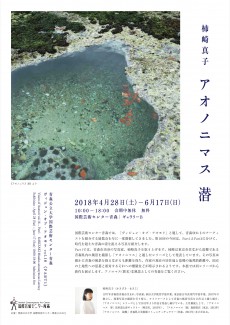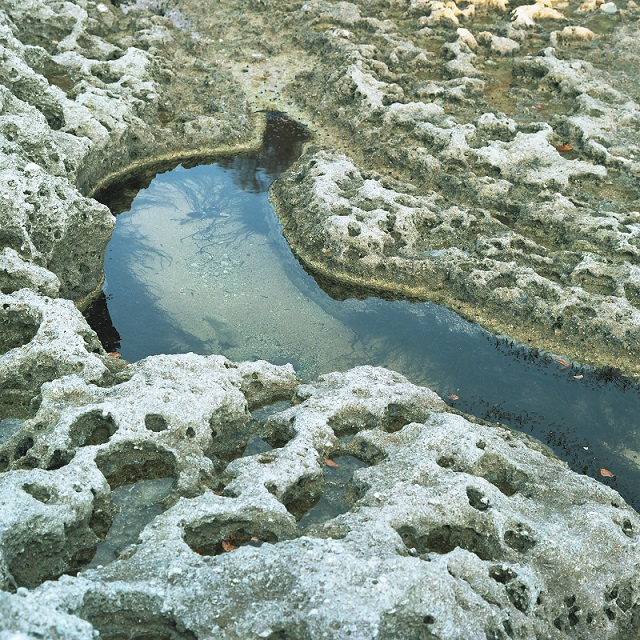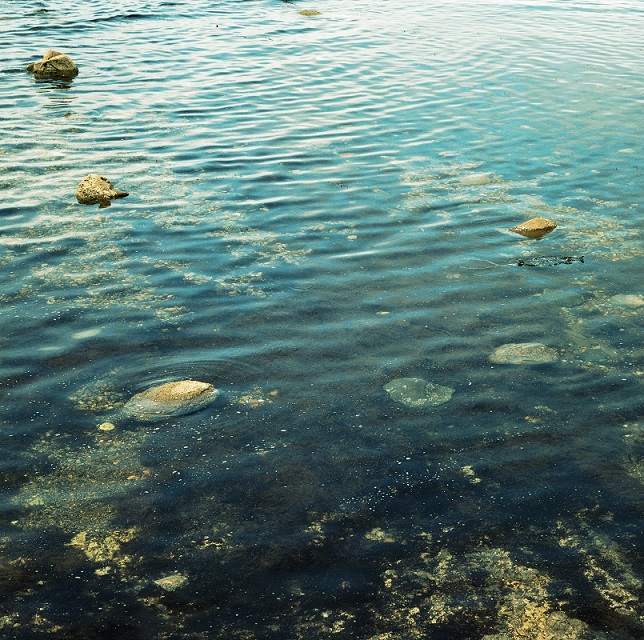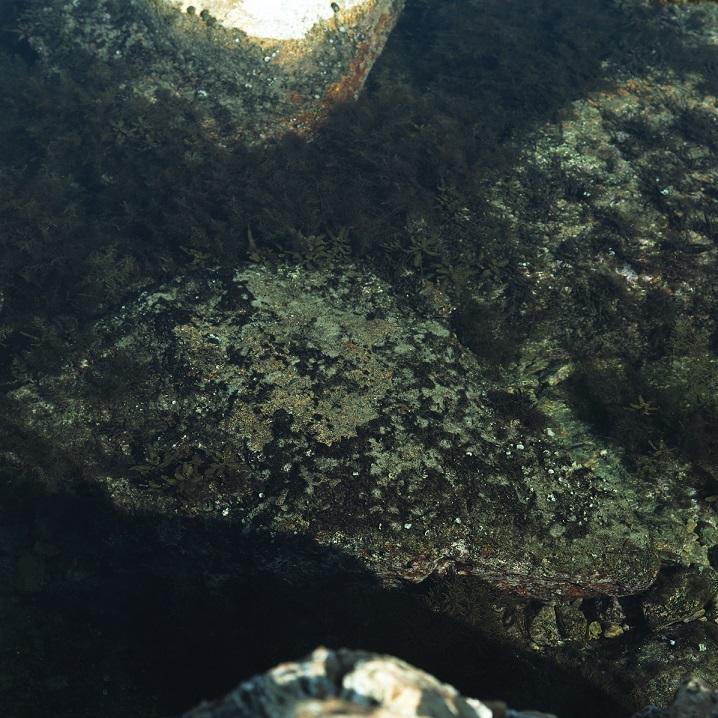
ヴィジョン・オブ・アオモリvol.16-Part1
柿崎真子 | アオノニマス 潜
国際芸術センター青森では、「ヴィジョン・オブ・アオモリ」と題して、青森ゆかりのアーティストを紹介する展覧会を年に一度開催してきました。第16回の今回は、part1とpart2に分けて、時代を超えて青森の姿を捉えた2つの展覧会を開催します。
Part1では、青森市出身の写真家、柿崎真子を取り上げます。柿崎は東京在住ながら故郷である青森県内の風景を撮影し「アオノニマス」と題したシリーズとして発表しています。その写真は確かに青森の風景を捉えながらも距離を保ち、作家の現在の居住地と故郷の地理的距離や、固有の土地性への思慕と相対するそれへの懐疑などが暗示されるようです。本展では同シリーズから新作を展示します。アノニマス(匿名)な風景としての青森をご覧ください。
【関連イベント】
■オープニング・アーティストトーク
柿崎真子と、同時開催の「多田友充展」の多田友充が自身の作品と展覧会についてお話しします。
日時:4月28日(土)14:30-15:30
会場:ラウンジ、ギャラリーA、B
※無料、申込不要、直接会場においでください。
柿崎真子(かきざき・まさこ)
1977年青森県青森市生まれ。写真家。秋田大学教育学部卒業。東京綜合写真専門学校卒業。2007年に独立し、商業写真の撮影を行う傍ら、ライフワークとして青森の風景写真を15年以上撮り続け、「アオノニマス」シリーズとして2012年より作品を発表し続けている。
個展
2015年 「アオノニマス 界」馬車道大津ギャラリー、神奈川
2013年 「アオノニマス 肺」 森岡書店、東京
2012年 「アオノニマス 接触」青森県立美術館コミュニティギャラリー、青森
2012年 「アオノニマス 雪」森岡書店、東京
グループ展
2015年 「青森県立美術館プロデュース Fly Me to the AOMORI 青い森へ連れてって」愛知芸術文化センター、愛知
2014年 「Cyg SELECT」Cyg art gallery、岩手
写真集
2013年 「アオノニマス 肺」(私家版)
2012年 「アオノニマス 雪」(私家版)
―
輪廻のまなざし
展示室に入ると壁面に並ぶ額装された写真作品が目に入る。大小様々なそれらは約6mの高さを持つギャラリーの壁面上部に大きく余白を持たせて低めの位置に設置され、波打つような上下のリズムを作っている。室内中央には、まるで床が隆起したかのように床と同色のグレーの立方体が二つ置かれている。内側が黒く塗られたそれを、洞穴を覗くかのような心持ちで覗いてみると、底面には浅瀬のごつごつした岩場らしきものを撮影した写真が見える。二つの岩場の写真のうち一つには小さな水たまりができており、もう一つには上部から光が差し込んでいる。四方から覗くことができる立方体に収められた作品は、辛うじて天地と左右が判るかどうかの構図で切り取られている。
本展の会場構成に当たり、柿崎は自然の中で風景を見る時と同じような位置関係で作品が見られることを意図していた。水平線は人の目線の位置に見え、海岸に行くと足元に水がある。その自然の摂理に則り、沖の方を写した作品は目線かそれより低く、浅瀬を写した作品は足元に。そのような柿崎の意図は、柿崎が被写体でもある自然へ対峙する姿勢につながる。いわゆる観光写真のような風光明媚な様子や、辺境のエキゾティシズムを強調するわけでもない。「アオノニマス」シリーズは自身の実家の近所を撮影することから始まり、徐々にいわゆる名所を撮影することも出てきたが、どの場所であっても柿崎は、人類が生まれる何千年も、何万年も前からそこに佇み、あらゆる生を見守り続けてきた存在として対峙する。故郷青森に在る自然は、そこに佇み柿崎の撮影を見続け、同時に連綿と彼女に連なる人々の生をじっと見続けた存在でもある。柿崎が風景をまなざす時、風景も柿崎をまなざしている。
そこに居続け、目の前のことを見続ける、そのことの偉大さに、柿崎は目の機能を拡張させるカメラという機器を扱う者として畏怖を抱いている。だから、柿崎にとって被写体が有名か無名かは問題とならない。被写体がまとうイメージをはぎ取ってアノニマスな(匿名の)ものとしていくような、少しの暴力性をはらんだ積極的な関与というよりも、その場所が発する小さな声を聞き取り、それに応答していくことが柿崎にとっては重要なのだ。極端なクローズアップでもなく、遠景でもなく、柿崎の写真が被写体に不思議な距離を保っているのは、人と人との距離感がそうであるように、被写体と柿崎双方にとっての心地よい距離を測っているからと言える。だからこそ、切り取られた風景が決して寡黙ではなく、表皮の肌理を通して鑑賞者にその存在を語りかけてくるのであろう。
このような自然への対峙の方法は、確実に青森で培われたものだろう。冬季には猛烈な積雪に覆われる青森では、雪を基準に暮らしが組み立てられる。吹雪は時間が経つのを待つしか無く、積もった雪を寄せなければ家を出ることもままならない。雪は打ち克てるものでは到底無く、どうにかうまく付き合うしかないのだ。そのような土地で生まれ育った柿崎が、自然の声を聴くことに長けているのは当然とも言える。「アオノニマス」というタイトルはアノニマスと青森のアオが掛け合わされているが、その青森とは、単に青森の自然ということのみならず、その自然に育まれた人としての作家自身も含まれている。
再びギャラリーへ戻ろう。ギャラリー奥の壁面はガラス窓になっている。窓の外には床面とほぼ同じ高さで接する水面が広がり、その向こうには松の木が群生した森が広がっている。窓の手前の床面には、森の方向を向いて作品が置かれ、見る者の視線を水辺から森へと誘導する。その作品には海中が写されており、その海中にはミニチュアの松の木のような形の藻が群生し、窓の向こうに見える松の木と呼応する。鑑賞者は作品を見、窓からの風景を見る。窓の外に佇む自然は、人間の行為を見つめている。そうしてしばらくしてからギャラリー内に目を移すと、自然光がたっぷりと降り注ぐ室内からアオノニマスな作品が私を見つめていることに気付く。私はその視線に包まれ、自然の輪廻へと取り込まれてゆく。
国際芸術センター青森 主任学芸員 金子由紀子
- 日時
- 2018年4月28日(土)-6月17日(日)10:00-18:00
- 会場
- ギャラリーB
- 対象
- 無料

Vision of Aomori vol.16 – Part 1 KAKIZAKI Masako | aononymous: Latency
In 2018, the Aomori Contemporary Art Centre (ACAC) holds its 16th annual Vision of Aomori exhibition, which features artists who have a connection to Aomori. This year, the ACAC highlights photos that capture timeless views of Aomori in a two-part series. aononymous: Latency features the works of photographer Kakizaki Masako, who was born in Aomori City. Kakizaki, who now lives in Tokyo, continues to shoot landscapes of Aomori in her ongoing photo series aononymous. While her photographs do indeed capture these landscapes, they retain a certain distance, as if to imply both the geographical distance between her current residence and her birthplace as well as a yearning for a particular sense of place yet, at the same time, a proportional amount of skepticism. Here, Kakizaki presents her newest works from this series. Enjoy the otherwise anonymous landscapes of Aomori in aononymous: Latency.
aononymous Latency
ー
A Cyclical Gaze
I enter the gallery to see its walls lined with framed photographs, hung at varying heights on the lower portions of the 6-meter high walls as if to create an undulating, wave-like rhythm within the space. In the center of the gallery, two grey structures emerge like two protuberances from a floor of the same color. Inside they are painted black. I peek inside of them both, much like I would a cave, where I see photos of what appears to be the rugged rocks of a dry creek bed. A small pool of water is seen in one of the photographs while light shines onto the rocks from above in the other. The work, housed in a three-dimensional structure observable on all fours sides, is composed such that the viewer can barely make out any sense of direction.
When thinking about the exhibition layout, KAKIZAKI Masako intended her works to be seen similarly to how they would be seen in nature. On the coast, the horizon is visible at eye level and the water is visible at one’s feet. In accordance with these simple laws of nature, Kakizaki placed her works that depicted the coast at eye level or slightly lower and others that depicted the shoals at the feet of the viewer. Kakizaki’s intentions connect back to a confrontational attitude toward nature, a frequent subject of her photography. Her photographs are not the stuff of picturesque postcards nor do they seek to fetishize the exoticism of some remote place. In fact, Kakizaki’s aononymous series began while photographing the neighborhood near her family home and she has gradually gone on to shoot famous sites and attractions, but no matter where she goes, Kakizaki confronts objects that have existed for tens or hundreds of thousands of years, objects that have quietly sat and watched all forms of life go by. The nature in Kakizaki’s native Aomori is a constant presence that has continued to watch over her and her practice while simultaneously observing the lives of the people in her life. When Kakizaki glances at nature, nature glances back.
As someone who uses a camera as a tool to extend the function of the human eye, Kakizaki is struck with awe at nature’s greatness—how it continues to exist in one place gazing at whatever unfolds in front of it. That is why it doesn’t matter to Kakizaki whether her subjects are famous or not. It is not that she strips her images of their identity, making them anonymous in an invasive act fraught with violence. What is important to her is that she listens to the tiny voices present in each place and responds accordingly. Her photos keep a mysterious distance with their subjects, neither extreme closeups nor distant panoramas, and just as people tend to keep their distance with one another, it seems as if Kakizaki and her subjects maintain a comfortable distance with each other. That may also be why the landscapes she captures are never silent but speak of their presence to the viewer through the textures of their surface.
This confrontational approach toward nature was surely developed in Aomori. Life in Aomori has been designed to cope with the heavy snowfalls that come every winter. There is nothing to do but wait out the blizzards, and some people cannot even leave their homes without first digging themselves out. Snow in Aomori cannot be defeated; it can only be dealt with. It seems natural that Kakizaki, having grown up in Aomori, would be adept at listening to the voice of nature. aononymous, the title of her exhibition, is a play on words that combines the words “anonymous” and “Aomori,” but the concept of Aomori does not only encapsulate the nature of the place, but also the people who live within it, and that includes the artist herself.
But let us return to the gallery space. At the back wall of the gallery is a glass window. Outside, the water’s surface stretches out at the same height as the floor inside, past which a thicket of pine trees extends into a dense forest. On the floor in front of the gallery window is a single photograph facing the forest, and the viewer’s gaze is led from the water to the forest. The photos reveal an underwater scene, and in it clumps of algae grow like a miniature forest of their own, as if in resonance with the pine trees outside the gallery window. The viewer first sees the photograph and then stares out the window at the scenery in front of them. The nature outside stares back, gazing at our actions, the collective actions of humankind. When I look back inside the gallery after looking out the window for a little while, I notice that the photographs of Kakizaki’s aononymous series are staring right back at me, inside this room bathed in sunlight. I find myself enveloped in their gaze, drawn into the cyclicality of nature.
KANEKO Yukiko
Chief Curator, Aomori Contemporary Art Centre
- 日時
- April 28 (sat) - June 17 (sun), 2018, 10:00-18:00
- 会場
- Gallery B
- 対象
- admission free




